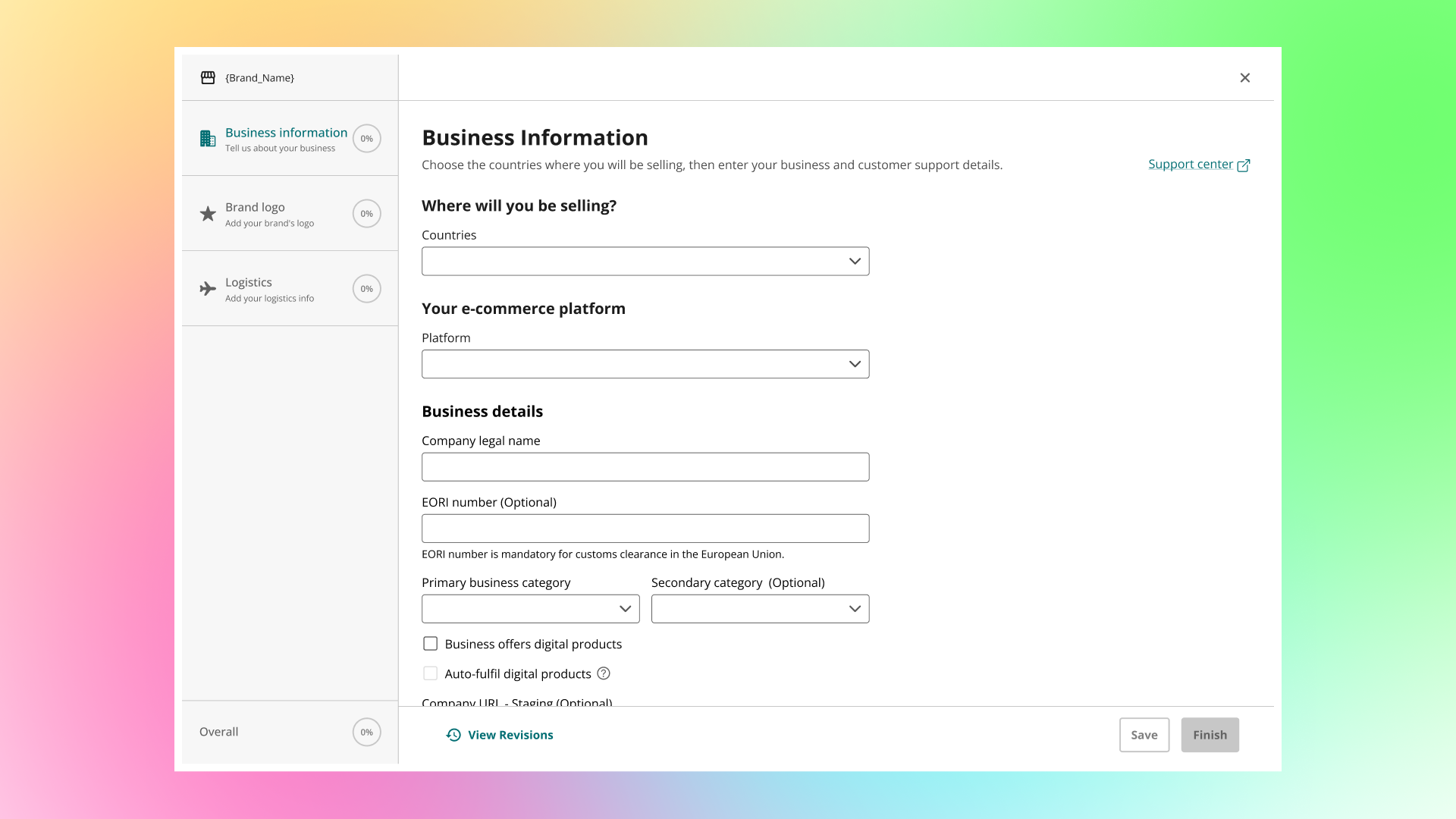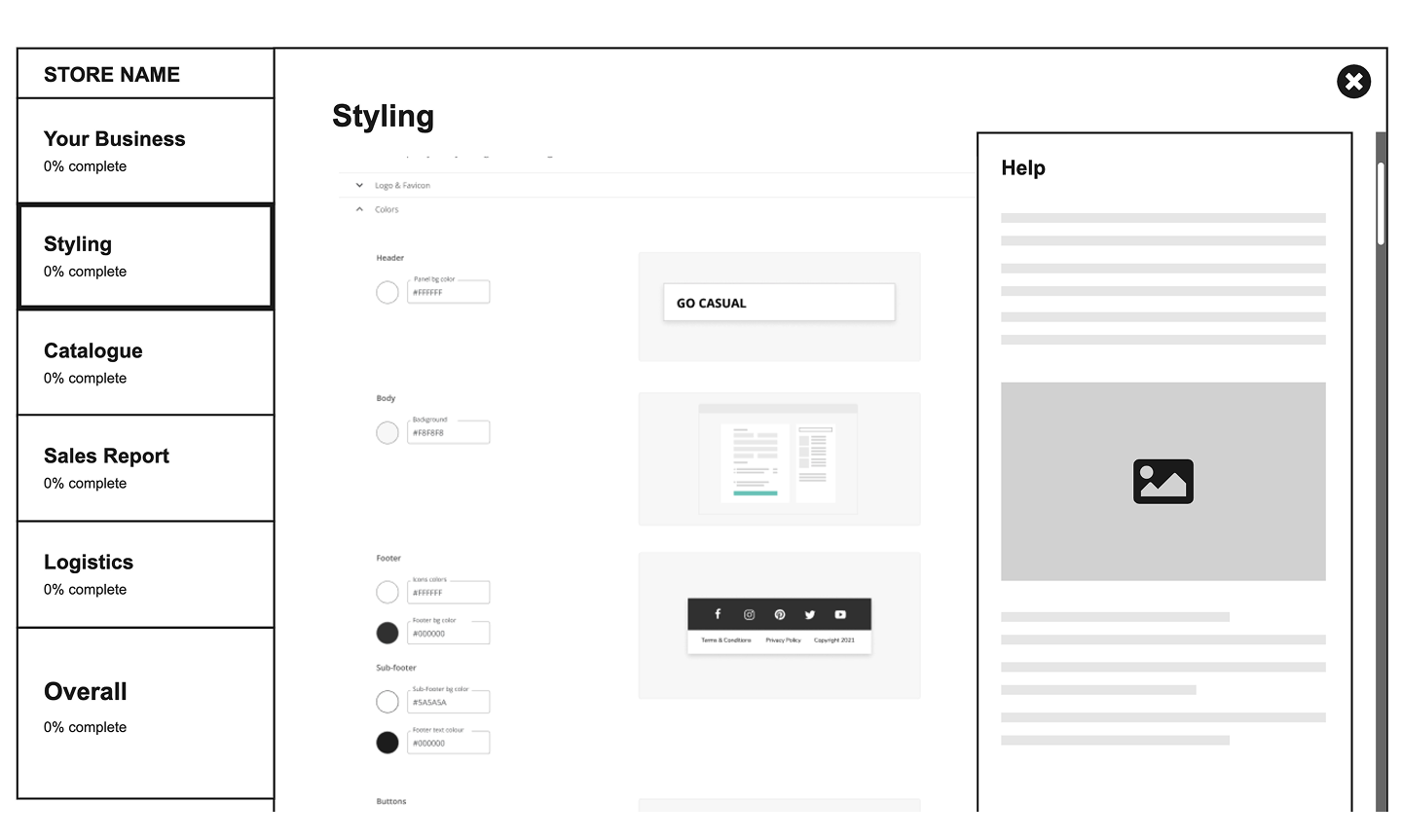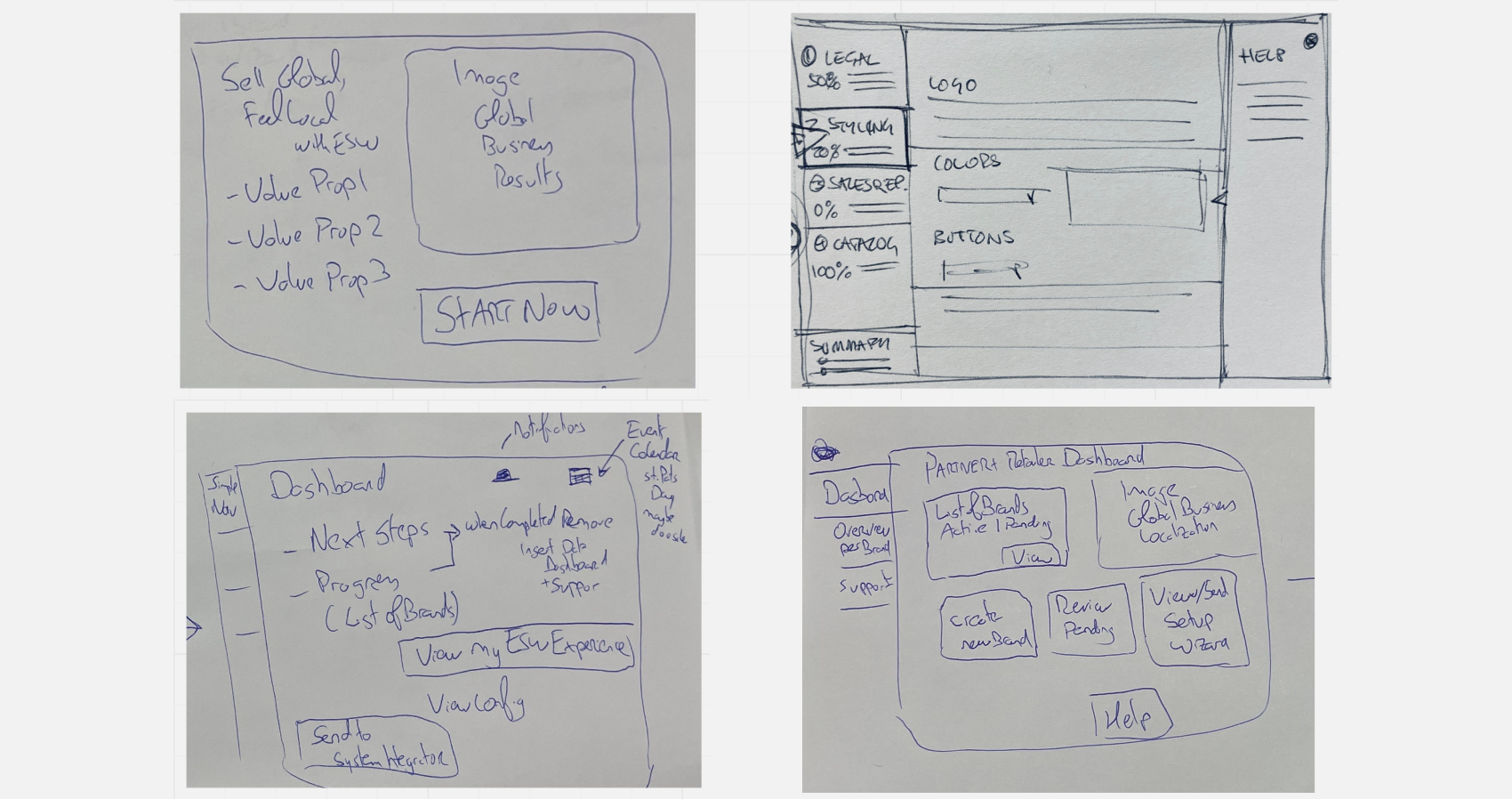ESW
Transforming the ESW Retailer Onboarding Experience
The existing retailer onboarding process was slow, manual, and error-prone—taking over 4 hours per setup and requiring input from multiple teams. This created bottlenecks, increased costs, and placed unnecessary strain on engineering and operations.
Our objective was to transform this fragmented experience into a streamlined, scalable platform that minimized engineering involvement, reduced configuration time, and empowered operations teams to manage onboarding with greater accuracy and efficiency.
Deliverables: Retailer onboarding wizard
Project Type: E-commerce configuration tooling; Design system
Team: 3 designers across onboarding and integration workstreams.
Business Goals
The business goal was to simplify and automate a manual, error-prone retailer onboarding process that took 4+ hours and relied heavily on multiple teams. By reducing engineering involvement and streamlining workflows, we significantly cut configuration time and errors—resulting in major cost savings.
User Impact Goals
Our goal was to empower operations teams with an intuitive, error-resistant onboarding platform that would streamline the retailer integration process. By implementing automated validation, standardised workflows, and centralised data management, we aimed to drastically reduce configuration time while ensuring accuracy and consistency across all onboarding cases.
Design Process
My approach blends deep research, collaborative workshop and activities, and rapid iteration to deliver thoughtful, user-centred design. I guide teams to uncover core needs, implement scalable design systems for efficiency, and focus on clarity and simplicity to create intuitive experiences that drive product and business impact.
01/ Research & Ideation
Through stakeholder interviews and workflow analysis, we identified key pain points in the manual onboarding process. A 5-day cross-functional design sprint with engineering, operations, and product teams led to developing a scalable modular workflow model. Using sacrificial concepts and collaborative workshops, we aligned stakeholders and uncovered that high variability in onboarding cases was causing significant inefficiency and user frustration.
02/ Flow Mapping
Our flow mapping phase focused on understanding the diverse user roles involved in onboarding, including operations teams, managers, designers, CRM specialists, and sales engineers. We evaluated the trade-offs between self-service and guided approaches, mapping user journeys and touchpoints to identify optimal paths for different user types and scenarios.
03/ Concept Designs
Established a clear design direction aligned with stakeholder input. Balanced customisation with operational standardisation. Incorporated legal/compliance feedback to address risk-related flows. Prototyped user flows in Figma with ongoing validation and testing by target users.
04/ Final Designs
The onboarding flow was redesigned to enhance user experience with a step-by-step onboarding wizard, tailored dynamic data requirements based on each retailer, and real-time progress tracking. These improvements streamline setup, reduce user friction, and ensure higher completion rates.
Impact
Reduced time to config by 75% (4hrs to 1hr)
Contributed to reduction of config bugs by 50% (€14k savings)
Contributed to reduction of integration cost from 140sp to 70sp
Contributed to overall cost savings of 20% for H1 and 50% cost saving over 2024–2025
Round Up
We redesigned a complex, manual retailer onboarding process into a streamlined, automated flow—cutting setup time by 75% and errors by 50%. Through cross-functional design sprints, modular workflows, and dynamic onboarding tools, we reduced engineering dependency and enabled major cost savings across the business.








